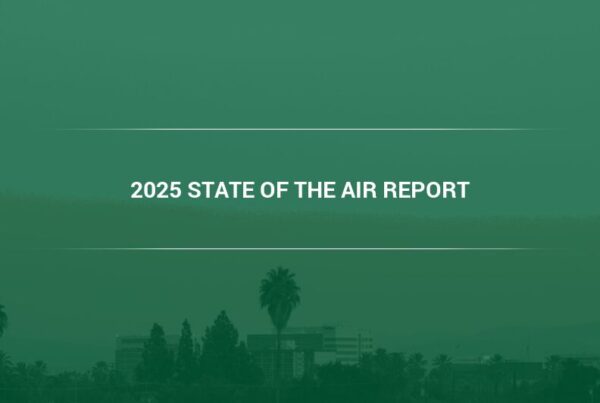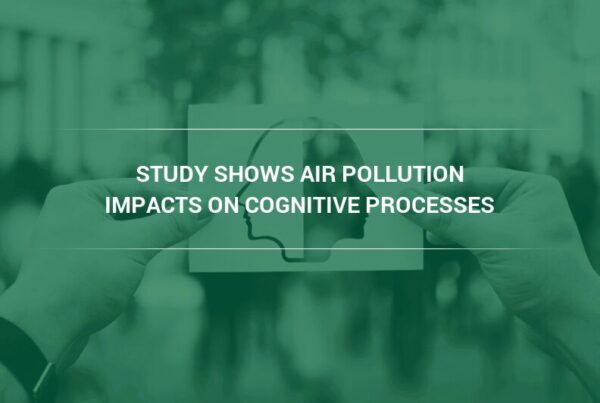The effects of air pollution on children’s health are much more pronounced than its effects on the health of adults. Air pollution represents a special danger to children, as it can do more harm to them with less exposure. Why is it that children are so easily harmed by air pollution? What steps can be taken to protect the health of children from the effects of air pollution?
The Most Common Air Pollutants Likely to Impact People
The most common air pollutants likely to impact people include a host of indoor air pollutants, as well as the criteria air pollutants that impact outdoor air quality as defined by the EPA.
“Common indoor air pollutants include carbon monoxide, radon, secondhand smoke, dust, lead, and mold,” says Charles Seyffer | Manager of Marketing & Technical Materials atCamfil. “Carbon monoxide can be emitted by fossil fuel burning devices like heaters that burn fuel incompletely, radon is a colorless gas that is naturally emitted from the earth as uranium in the soil breaks down, lead particles can be released by lead paint in older houses, as well as lead pipes, and mold can grow from standing moisture in areas like air vents and basements.” (1)
The EPA has defined six criteria air pollutants. These are pollutants that are the most pervasive pollutants found in outdoor air and they do the most damage to human health. These criteria air pollutants are ground-level ozone, carbon monoxide, sulfur dioxide, nitrogen dioxide, particulate matter, and also lead.
“Carbon monoxide and nitrogen dioxide are released primarily by the burning of fossil fuels to power cars, buses, and trucks,” says Seyffer. “Sulfur dioxide is primarily released by the burning of sulfur or sulfur containing materials at industrial facilities. Ground-level ozone is created by the interaction of sunlight and volatile organic compounds or nitrogen oxides in the atmosphere, and particulate matter in general forms in the atmosphere as a result of chemical reactions between the varying pollutants.” (2)
Impacts of Air Pollutants on People’s Health
The impacts of air pollutants on people’s health mainly consist of damage to people’s respiratory system, and irritation of the eyes, throat, and nose. However, depending upon the pollutant and the severity of a person’s exposure to the pollutant, other health damage may occur.
“Carbon monoxide is one of most dangerous indoor air pollutants, as it can easily lead to death in high concentrations, and at lower concentrations, it can cause headaches and nausea,” states Seyffer. “Lead can cause both brain and nerve damage, especially in children, as well as kidney damage and anemia. Radon can cause lung cancer, and so can environmental tobacco smoke. Tobacco smoke can also cause pneumonia and bronchitis, particularly in children.” (3)
Biological agents that hide in household dust and pet dander, or mold can all cause allergic reactions, as well as the exacerbation of asthma symptoms, and increased vulnerability to flu and other infectious diseases. Nitrogen oxide exposure can cause an increased risk for respiratory infections in children, and ozone exposure can cause permanent lung damage as well as respiratory tract infections. Sulfur dioxide can irritate the eyes, nose, and throat, as well as increase the chance of developing asthma.
Children’s Greater Health Risk From Air Pollution
Children are at much greater risk for harm from air pollutants. Children’s greater health risk from air pollution is due to several factors, such as their behavior and their physiology.
One of the reasons that children are uniquely susceptible to air pollutants is that they have unique behaviors that adults don’t have. Children often play in the dust or crawl on the ground, kicking up dust and dirt which can easily carry large amounts of toxic substances. Children frequently put things like toys, their hands, or other objects into their mouths, meaning that they are ingesting potentially harmful chemicals.
Children also tend to spend much more time outdoors than adults do, increasing their exposure to outdoor air pollutants. They are more physically active as well, and the increased breathing during exercise means they inhale more pollutants.
“Another reason that children are easily harmed by air pollutants is that they’re still developing and are unique physiologically,” explains Seyffer. “Children breathe in, drink, and eat more substances relative to their body size, and they haven’t had time to develop the biological defenses that adults have.” (4)
Their developing immune system, metabolism, and lungs are at particular risk from pollutants. Our brains have protective barriers surrounding them, but this barrier isn’t fully developed in children. In addition, their nasal passages can’t filter out pollutants as effectively as the nasal passages of adults.
Fighting the Effects of Air Pollution on Children’s Health
Fighting the effects of air pollution on children’s health will require a multi-faceted approach that deals with both indoor and outdoor air pollutants.
In terms of fighting outdoor air pollution, it’s a societal issue that is larger than any one person and will require that people work together to protect children. Regulations will have to be developed to limit air pollution and researchers will have to work on less polluting alternatives to many technologies. People can do their own part to reduce air pollution by carpooling, walking, or biking.
Air pollution in the home can be fought by identifying and eliminating or reducing sources of indoor air pollution. Common sources of pollutants like chemical cleaners should be used responsibly and with care, in addition, the home should be regularly maintained and cleaned to eliminate dust and mold.
Air pollutants like dust, mold, smoke and particulate matter can easily damage children’s bodies, so it is important to remove these pollutants from indoor air. Having a good HVAC system with the proper air filters is one of the best ways to protect children from the effects of air pollution on their health. High-efficiency air filters can remove a very high level of the air pollutants that threaten the health of children and adults alike.
The health of your children depends on reducing indoor air pollutants and by extension reducing the effects of air pollution on children’s health. Contact Camfil now for help determining the best type of filter to employ in your home HVAC system to protect the health of your children.
SOURCES
https://usgreentechnology.com/7-common-indoor-air-pollutants/
https://www.epa.gov/criteria-air-pollutants
https://www.arb.ca.gov/research/indoor/healtheffects1table1.htm



